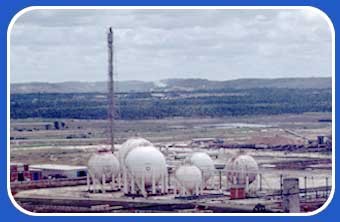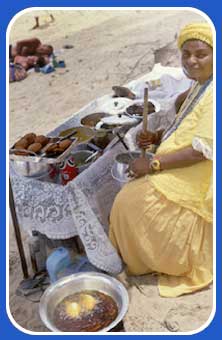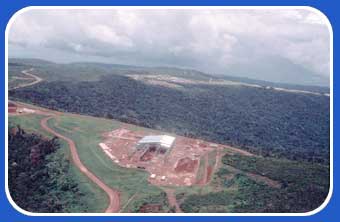|
|

|
|
|
|
| |
|
|
|
|
| |
 |
Today, Brazil is the
most industrialised of all the countries in the
developing world. It is one of the world's biggest
producers of steel, cars, aircraft and chemicals.
Many people work in factories, particularly in the
south-east around Sao Paulo where more than half
of Brazil's industrial goods are made. |
| Factories like this
one that makes chemicals, provide many jobs for
people in Brazil. But these factories create problems
for people too. |
|
|
|
|
|
|
|
|
|
|
|
| |

�Susan Cunningham/Panos Pictures. |
How might factories like this affect the local quality
of air and water?
What other problems may factories like this create
for the people who live nearby? |
|
|
|
|
|
|
|
|
|
|
| |
 |
Does everyone in Brazil
work in a factory then? |
| Not at all. Machines
are replacing people in many of the factories, and
there aren't enough jobs to go round in Brazilian
cities. Instead, many people use their own skills
to set up a business to offer a service. Like people
in the UK, more than half of all Brazilians have
service jobs. Can you make a list of service jobs
that people do in this country? |
 |
|
|
|
|
|
|
|
|
|
|
| |
 In
the picture, you can see a woman who works in the
city of Salvador. She cooks and sells delicious
snacks called Acaraje, using ingredients like prawns,
palm oil, beans, peppers and chilli. These ingredients
are common in West Africa, the home of her ancestors.
If you like spicy food, you would love these! In
the picture, you can see a woman who works in the
city of Salvador. She cooks and sells delicious
snacks called Acaraje, using ingredients like prawns,
palm oil, beans, peppers and chilli. These ingredients
are common in West Africa, the home of her ancestors.
If you like spicy food, you would love these!
|
|
|
|
|
|
|
|
|
|
|
| |
 �Maria
Luiza m. Carvalho/Panos Pictures.
�Maria
Luiza m. Carvalho/Panos Pictures. |
|
|
|
|
|
|
|
|
|
|
| |
| Fifty years ago, most
people earned a living from growing crops, rearing
animals or mining minerals out of the ground. Crops
are still grown on large plantations.
Roll your cursor over the pictures to see what sort
of crops are grown on plantations in Brazil: |

|

|
Some of the sugar cane
grown on plantations
is not for eating. Instead they ferment the sugar
to make alcohol that can be used as a cleaner fuel
for cars. Unlike petrol, this alcohol fuel does
not cause air pollution. |
| Mining minerals is
still big business as well. In the Amazon region,
Carajas is the world's biggest source of iron ore,
a mineral used to make iron and steel. To create
this vast mine, people had to clear thousands of
hectares of rainforest. Also they had to build a
890 km long railway to transport the iron ore to
the ports along the coast. |
|
|
|
|
|
|
|
|
|
|
|
| |
Carajas

� Sue Cunningham/Panos Pictures.
|
|
|
|
|
|
|
|
|
|
| |
 |
Go to the Data File
on the next page to find out more about Brazil's
exports and imports. |
|
|
|
|
|
|
|
|
|
|
|
|
 |
 |
|
|
